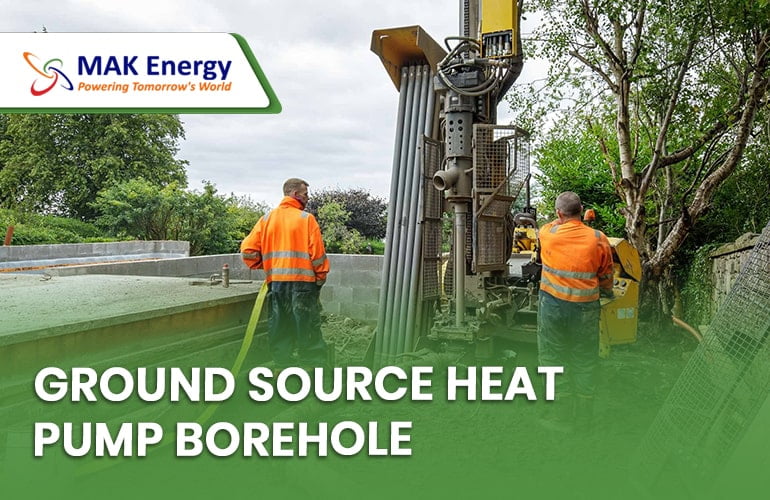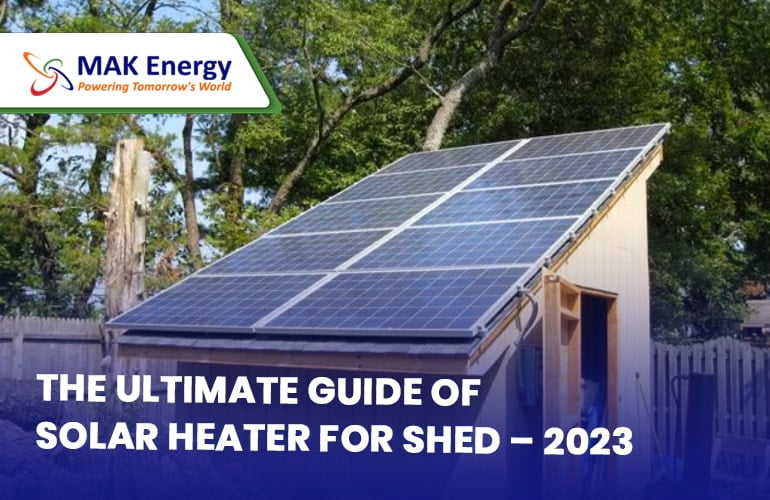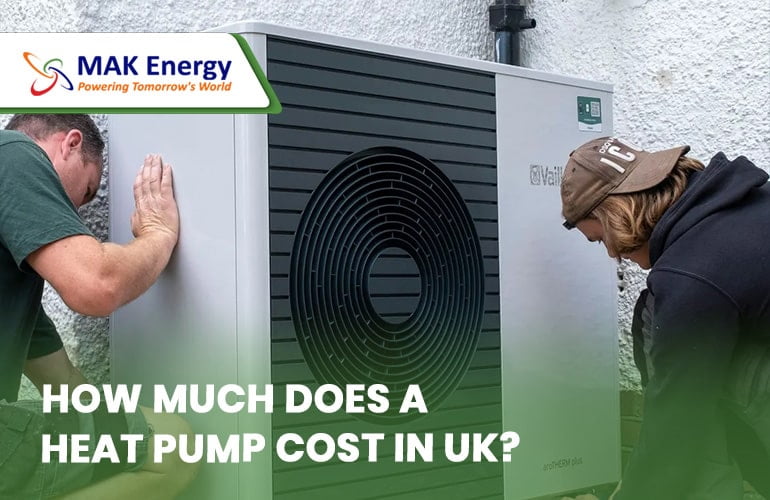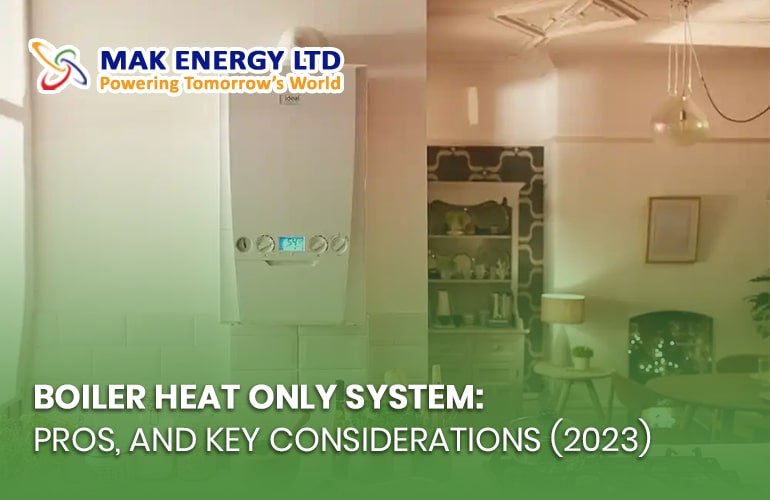Last updated: January 11th, 2024 at 06:56 am
A ground source heat pump is a renewable energy solution for heating systems in homes and business premises. The installation of a ground source heat pump requires either a borehole or a trench system, both of which extract heat from the ground. A borehole for the ground source heat pump is the most practical solution. However, drilling the borehole requires an experienced professional who can safely and efficiently carry out the drilling process.
Ground source heat pumps use vertical ground collectors or arrays to extract heat energy from the ground and transfer it to the heat pump. The costliest aspect of installing a ground source heat pump is the underground pipework, which can be done through vertical or horizontal ground loop systems.
In this article, we will discuss ground source heat pump borehole cost, including their functionality, working principle, and other essential information for those interested in this technology.
- What is Ground Source Heat Pump?
- What is Ground Source Heat Pump Borehole?
- Why Choose Boreholes for Your Ground Source Heat Pump Project?
- Types of Ground Source Heat pump system
- How Much Does a Ground Source Heat Pump Borehole Cost?
- What Affects the Cost of Digging a Borehole?
- Weather You Require Borehole or Trench
- What Sort of Projects Do Boreholes Suit?
- How Deep Are Boreholes?
- What Should I Consider Before Installing A Borehole?
- Summary
What is Ground Source Heat Pump?
A ground source heat pump operates by extracting heat from the ground, utilizing the accumulated warmth within the soil. This heat is then transferred to the pump, which distributes it to the desired area through a network of underground pipes. By opting for a ground source heating system, you not only contribute to environmental sustainability but also enjoy significant cost savings on your electricity bills. Before installing such a system, it is crucial to evaluate the different types of ground source heating systems available and select the one that best suits your specific needs. Embrace the Eco-friendly and cost-effective benefits of ground source heat pumps to efficiently heat your home.
What is Ground Source Heat Pump Borehole?
A ground source heat pump borehole is a vertical ground array or collector designed to extract heat energy from the ground for a ground source heat pump. Borehole systems offer the advantage of space-saving and minimal disruption during heat pump installation projects. In a vertical borehole system, only a width of 100-150 mm of garden or driveway space is required per borehole. The depth of each borehole typically ranges from 60 to 230 mm.
Here is how a ground source heat pump borehole works:
- A series of pipes are inserted into the ground, typically at a depth of 60-200 meters.
- The pipes are filled with a heat transfer fluid, which circulates through the ground.
- The heat transfer fluid absorbs heat from the ground, which is then transferred to the heat pump.
- The heat pump then uses the heat-to-heat water or air.
Why Choose Boreholes for Your Ground Source Heat Pump Project?
The borehole system for a heat pump is not only highly effective but also a practical solution, especially for those residing in small spaces with limited areas such as gardens or driveways. However, an alternative option is the horizontal system, which involves trenches covering a larger land area. If you own a substantial land area, the horizontal system may be a more cost-effective choice compared to the borehole system. In terms of reliability, the borehole ground source heat pump stands out as a dependable energy source.
Types of Ground Source Heat pump system
Closed-Loop Heat Pump
Closed-loop geothermal heat pumps typically utilize a closed loop system to circulate an antifreeze solution. The closed loop system consists of plastic tubing, which can either be buried in the ground or submerged in water. A heat exchanger is responsible for transferring heat between the refrigerant in the heat pump and the antifreeze solution circulating within the closed loop.
Another closed-loop system, known as direct exchange, operates without a heat exchanger. Instead, the refrigerant is pumped through copper tubing that is buried horizontally or vertically in the ground. Direct exchange systems require a larger compressor and are most effective in moist soils. It may be necessary to irrigate the soil to maintain adequate moisture levels. However, it is crucial to avoid installing these systems in soils that can corrode the copper tubing.
Horizontal Borehole
For residential installations, especially in new constructions with ample available land, this type of installation is generally the most cost-effective option. It involves digging trenches that are at least four feet deep. The common configurations for this installation approach involve the use of two pipes. One pipe is buried at a depth of six feet, while the other is buried at four feet. Alternatively, two pipes are placed side by side at a depth of five feet within a two-feet-wide trench.

The Slinky method, which loops the pipe, allows for more pipe to be accommodated in a shorter trench. This not only reduces installation costs but also enables horizontal installation in areas where it would not be feasible with conventional methods.
Vertical Borehole
Vertical systems are commonly employed in large commercial buildings and schools due to the impracticality of using horizontal loops given the required land area. They are also utilized in areas with shallow soil that is unsuitable for trenching, and they minimize disruption to existing landscaping.

In a vertical system, approximately four-inch diameter holes are drilled at intervals of about 20 feet, reaching depths of 100 to 400 feet in each hole, two pipes are inserted and connected at the bottom in a U-bend shape to create a loop. The pipes are securely fixed with grouting to optimize performance. These vertical loops are then interconnected using horizontal pipes, called a manifold, which are placed in trenches and connected to the heat pump located within the building.
Open Loop Heat Pump
In this particular system, a well or surface body water functions as the heat exchange medium, circulating directly through the ground source heat pump (GHP) system. Once the water has passed through the system, it is then reintroduced to the ground through a well, recharge well, or surface discharge. This approach is feasible when there is a sufficient and clean water supply available, while also ensuring compliance with local codes and regulations pertaining to groundwater discharge.
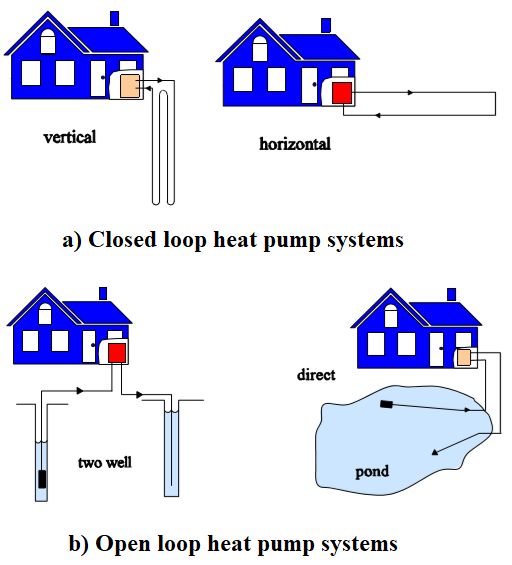
How Much Does a Ground Source Heat Pump Borehole Cost?
A borehole is a more expensive option for a ground source heating system due to the additional cost of drilling. However, it offers a good return on investment in the long run. Digging a borehole, whether horizontally or vertically, is an essential part of a ground source heat pump system and cannot be skipped. The ground source heat pump borehole cost depends on factors such as the type of system and the required digging. On average, you can expect to pay around £23 to £28 per meter for drilling a borehole, with the project taking 2 to 3 days to complete. The average ground source heat pump borehole cost ranges from £3,500 to £5,900, resulting in an overall project cost of £25,000 to £30,000.
In contrast, a horizontal trench is a cheaper alternative to a borehole heat pump, with a cost ranging from £2 to £5 per meter. The project can be completed in 1 to 2 days, and each trench will cost £2,500 to £4,500. The total cost of the project using horizontal trenches falls within the range of £14,000 to £24,000.
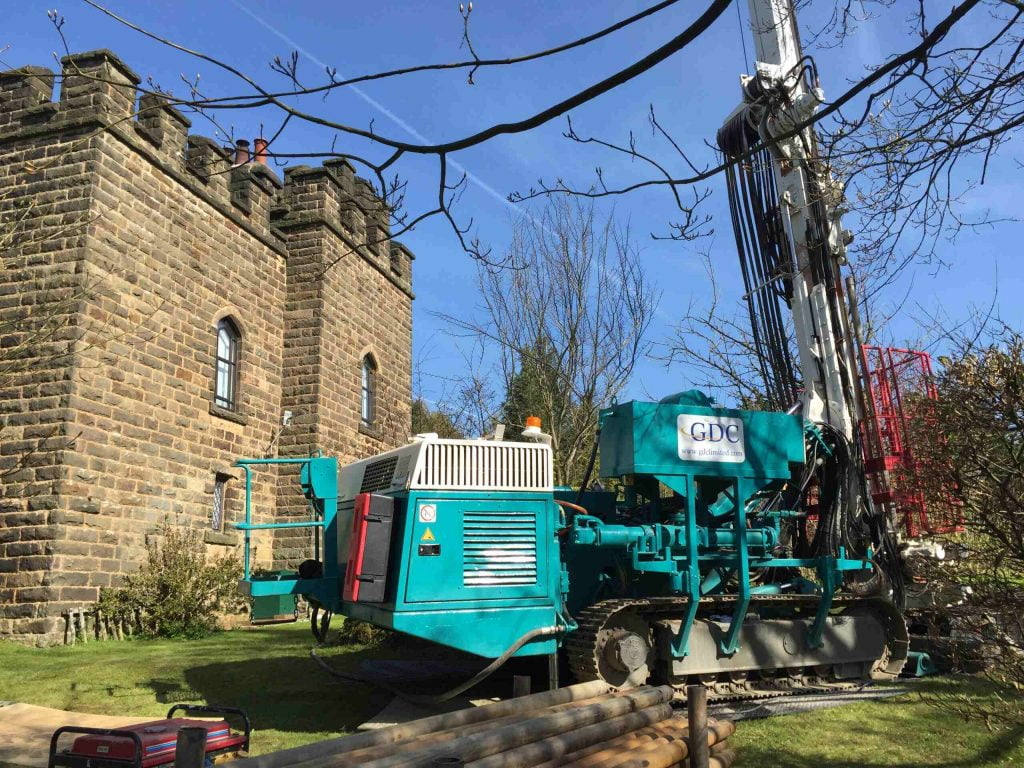
What Affects the Cost of Digging a Borehole?
The cost of digging a borehole can be influenced by various factors, including the depth and diameter of the borehole, soil type, geographical location, labour costs, and material expenses. It’s important to consider these factors when estimating the ground source heat pump borehole cost.
Weather You Require Borehole or Trench
As mentioned earlier, the cost of installing a borehole system is higher compared to a trench system. However, the borehole heat pump system offers greater efficiency and requires less space, whereas the trench system requires more land space but is more cost-effective. If you have a large area available and require a lower heating system, the trench system is a suitable choice. On the other hand, if space is limited, the borehole system is the better option.
Digging a horizontal trench can be done with standard machinery and is relatively inexpensive, costing around £3 to £6 per meter. In contrast, a borehole heat pump installation can cost around £23 to £28 per meter. Therefore, cost is another factor to consider when deciding on the system to install. If affordability is a priority, the horizontal trench system is the best option. However, if upfront cost is not a concern, the borehole or vertical ground source heating system is a favorable choice.
What Sort of Projects Do Boreholes Suit?
Ground source heat pump boreholes are typically utilized for domestic applications, large commercial projects, or sites where space is limited. They are particularly suitable when there isn’t enough room for horizontal arrays, such as slinky pipes in trenches. Vertical boreholes are highly recommended by MAK Energy as they not only provide efficient heat, but also save space during installation.
How Deep Are Boreholes?
Boreholes typically range in depth from 55 to 190 mm and have a width of 145 mm. However, to fully harness the potential of a ground source heat pump, medium-depth boreholes ranging from 310 mm to 410 mm can be used. These medium-depth boreholes are particularly beneficial in congested city locations. It is crucial to hire an experienced professional contractor for the drilling process, as it requires expertise and responsibility.
What Should I Consider Before Installing A Borehole?
Installing a ground source heat pump borehole is a complex process that requires a high level of professionalism. However, there are some essential factors to consider before proceeding with the installation. These considerations include:
Sizing and Efficiency of Borehole
The most effective method for determining the depth of a borehole is by considering the ground’s specific heat extraction properties, which are measured in watts per meter of borehole length. The performance of the borehole relies on the geographical location and its thermal conductivity. Generally, an 80 to 110 mm borehole can provide an extract-able heat output of 4 to 6 kW per year, based on 1800 running hours.
Ground Condition
A geological survey determines the material composition of the drilling area, guiding the borehole field design. Different geological conditions have varying heat transfer characteristics, such as loose stones at 20 W/m and granite at 55-70 W/m. The survey also identifies mine workings or aquifers, allowing for the utilization of subterranean water sources in open loop boreholes.
Spacing between Multiple Boreholes
If you are using multiple boreholes for your ground source heating system, there will be a space between each borehole. The average space need between each borehole is 5 to 6 m and it is also recommended to drill 5 to 6 m away from the building to avoid any interference between each borehole.
Summary
Determining whether a trench or borehole system is best suited for your needs can be a bit challenging. It largely depends on factors such as your budget, property size, and heating demands. However, overall, the ground source heat pump borehole is considered the optimal choice for maximizing the heating efficiency in both residential and commercial premises. It’s important to keep in mind that while the ground source heat pump borehole cost may be higher compared to other heating systems, the borehole heat pump provides efficient and effective heating.

